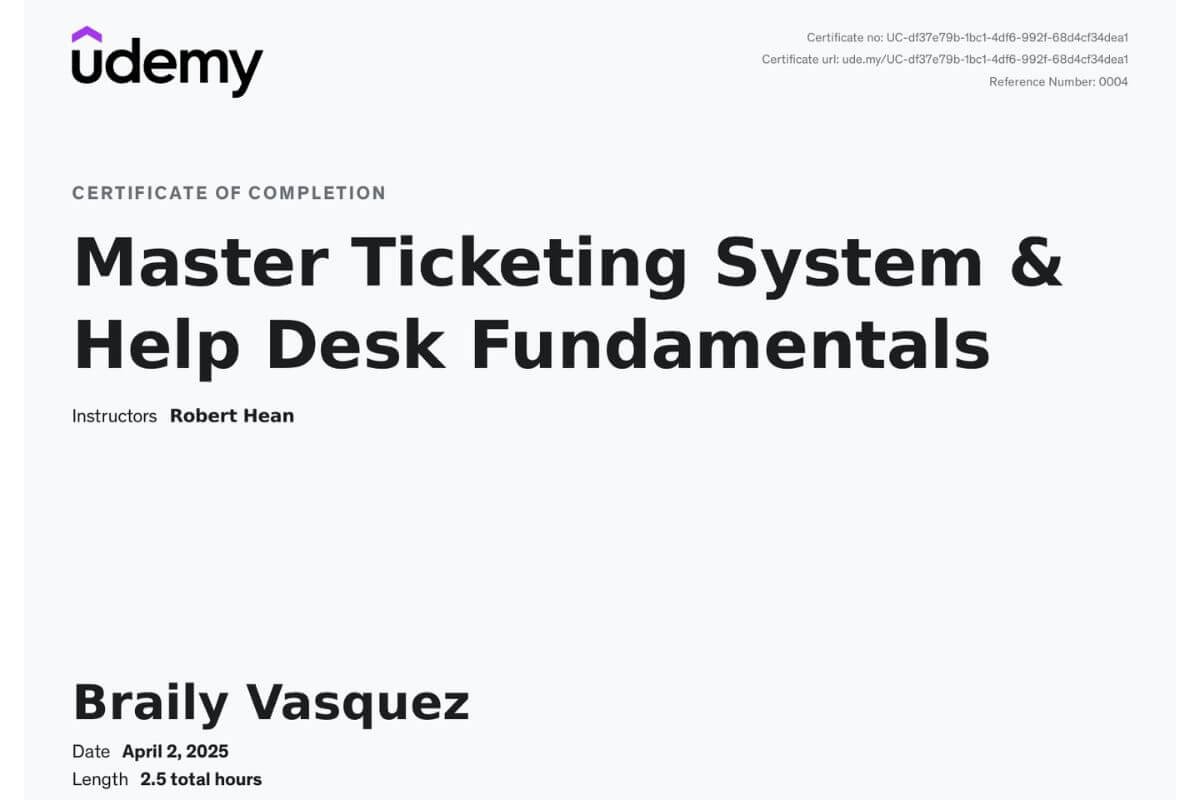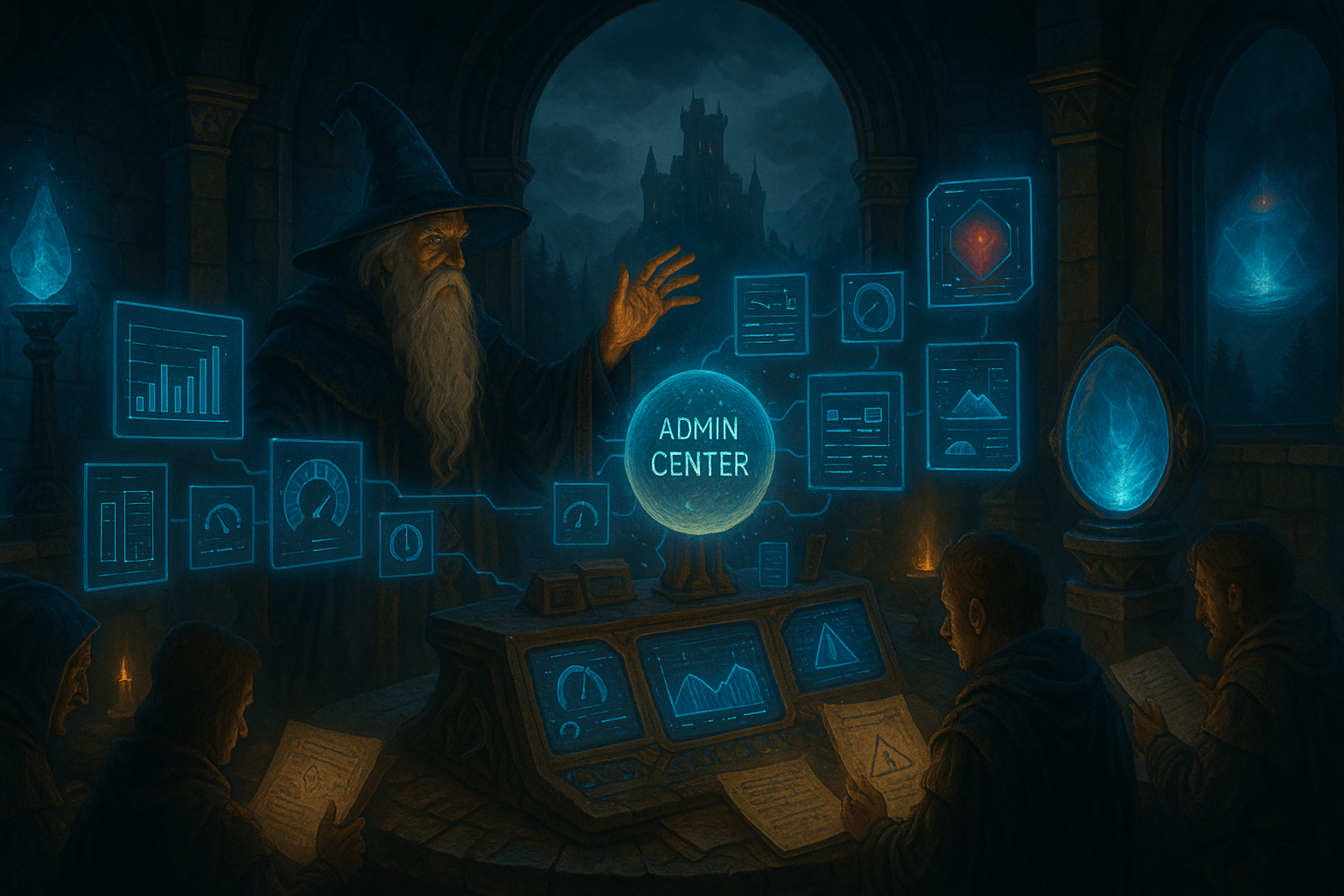I’ve just completed the Master Ticketing System and Help Desk Fundamentals course. This section focused on key aspects like planning, processes, reporting, and understanding the ticket lifecycle.
Whether you’re a tech recruiter, a team leader, or someone looking to boost their skills in help desk management, here’s a detailed breakdown of the most important points.
Course: https://www.udemy.com/course/ticketing-system-and-help-desk-fundamentals/

1. Planning: Setting the Foundation for a Successful Help Desk
Planning is crucial when setting up a ticketing system. A strong foundation will not only streamline day-to-day operations but also allow the team to respond more effectively to challenges as they arise. Here are the key aspects:
Understanding Your Customer’s Needs:
- Targeting Specific Groups: By identifying the customer base (e.g., new hires, external customers, or engineers), you can tailor the support system to meet their specific needs.
- Defining Requests: Different customer groups will require different types of support. For example, external clients may need different handling compared to internal engineering teams.
Actionable Takeaway:
- Know Your Customers: Understanding the nature of the requests from different customer segments will help you fine-tune your support structure. Make sure you assess and prioritize those needs to design an efficient ticketing process.
Continuous Improvement:
- Evolving Needs: As organizations grow or face technological shifts, the help desk system must evolve too. Periodically reassessing team structures, technology, and processes will ensure the system stays relevant and effective.
Actionable Takeaway:
- Regular Check-ups: Implement a review process every few months to adjust the system to new demands or technologies.
2. Processes: The Daily Operations of a Help Desk
Effective processes are what keep the system running smoothly. This section covered how to manage ticket intake, triage, escalation, and resolution:
Intake & Triage:
- Ticket Entry: Ensuring that tickets are entered correctly, with all necessary information, reduces delays and errors. The triage process helps categorize and prioritize tickets so that agents can focus on resolving the most critical issues first.
Actionable Takeaway:
- Improve Intake Efficiency: Proper intake and triage ensure that tickets are correctly categorized and routed, preventing delays and increasing agent efficiency.
Escalation:
- Clear Pathways: When tickets require expertise beyond the initial team’s capabilities, escalation procedures ensure they’re handed off to the right person. This is essential for resolving complex issues efficiently.
Actionable Takeaway:
- Establish Clear Escalation Procedures: A clear escalation framework reduces confusion and ensures issues are resolved promptly.
Ticket Resolution:
- Customer Confirmation: It’s important to confirm with the customer that their issue is fully resolved before closing the ticket. This reduces the likelihood of the ticket being reopened, saving time and effort.
Actionable Takeaway:
- Confirm Resolution: Always ensure that customers agree the issue has been resolved before closing a ticket.
3. Reporting: Measuring Success
Reporting is vital for tracking the performance of your ticketing system. Without insights, it’s impossible to know if your system is working efficiently.
Basic Reports:
- Key Metrics: Reports like open tickets, high-priority tickets, and aging tickets provide visibility into the system’s health. Understanding these reports helps identify bottlenecks, areas of improvement, and even staffing needs.
Actionable Takeaway:
- Monitor Regularly: Regularly review reports on open and high-priority tickets to gauge team workload and performance.
SLA (Service Level Agreements):
- Tracking Timeliness: SLA reports track how well your team meets agreed-upon response and resolution times. This is a critical metric for ensuring customer satisfaction.
Actionable Takeaway:
- Use SLA Metrics to Drive Efficiency: Ensure SLAs are met consistently by using reports to monitor response and resolution times. This can help identify underperforming areas or agents.
4. Ticket Lifecycle: From Creation to Closure
Understanding the full lifecycle of a ticket is key for any help desk operation. This section covered the ticket journey, from its creation to eventual closure.
Ticket Creation:
- Getting the Right Information: The first step in the ticket lifecycle is creating the ticket, which requires entering all relevant information clearly. This helps avoid confusion later in the process.
Actionable Takeaway:
- Ensure Proper Ticket Entry: Whether tickets are submitted via a portal, email, or other channels, ensure that the system captures the required information upfront.
Resolution and Closure:
- Avoiding Reopenings: It’s crucial to avoid the scenario where a closed ticket is reopened. Always confirm the issue is fully resolved with the customer before closing the ticket. This reduces unnecessary rework and improves customer satisfaction.
Actionable Takeaway:
- Double-Check Resolution: Before closing tickets, ensure all issues are fully resolved and that customers confirm they’re satisfied with the solution.





Leave a Reply